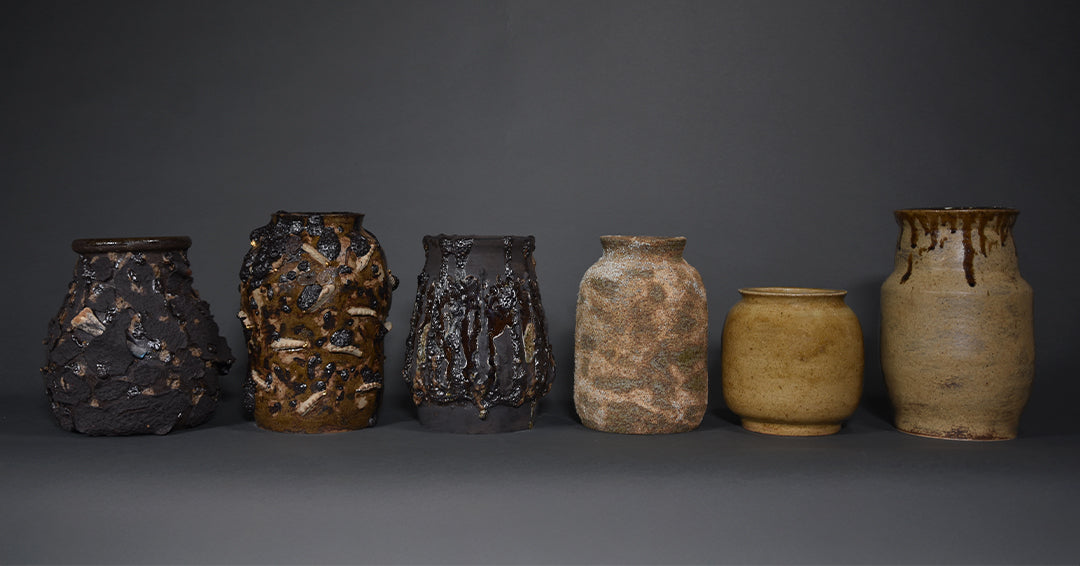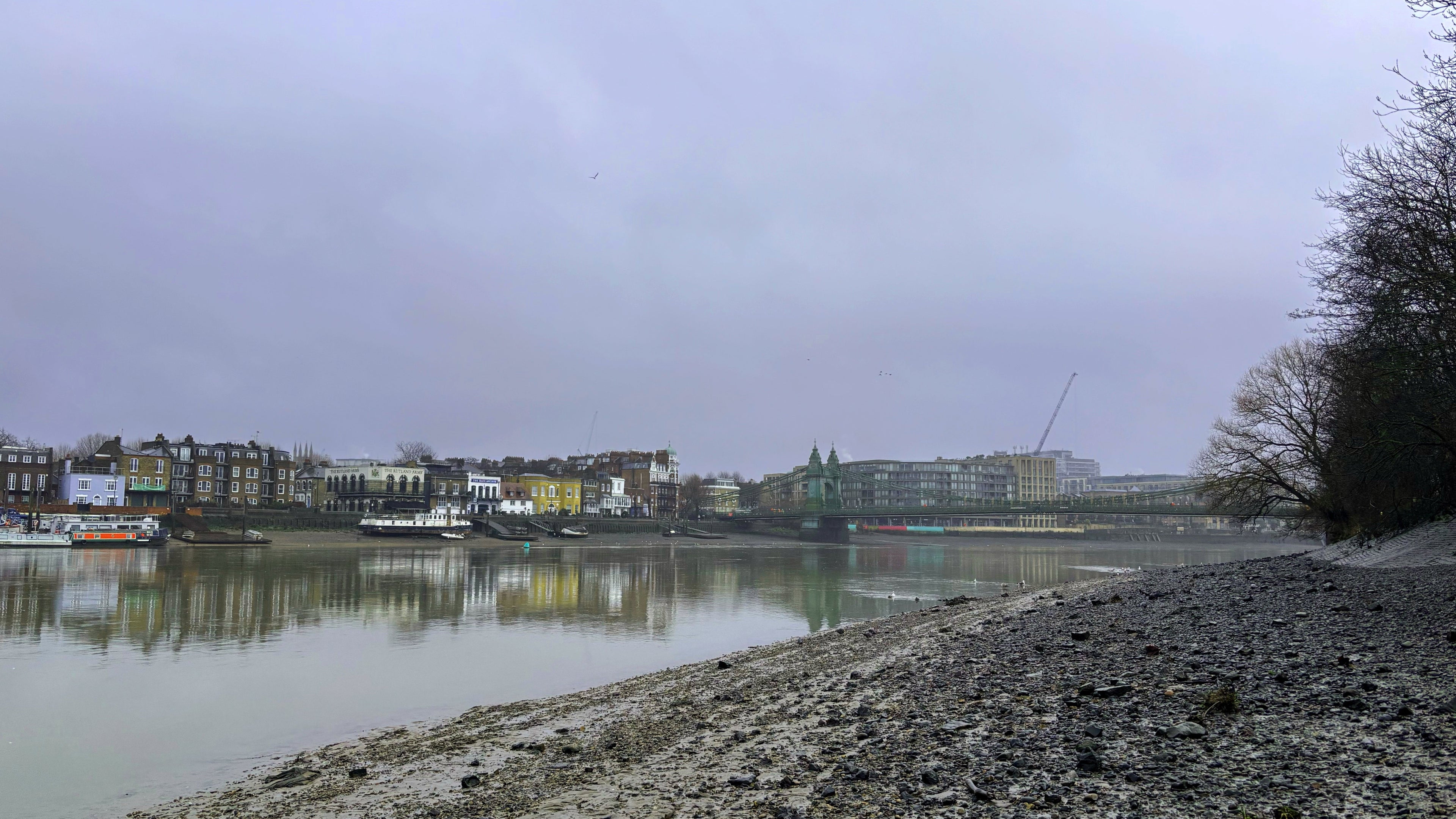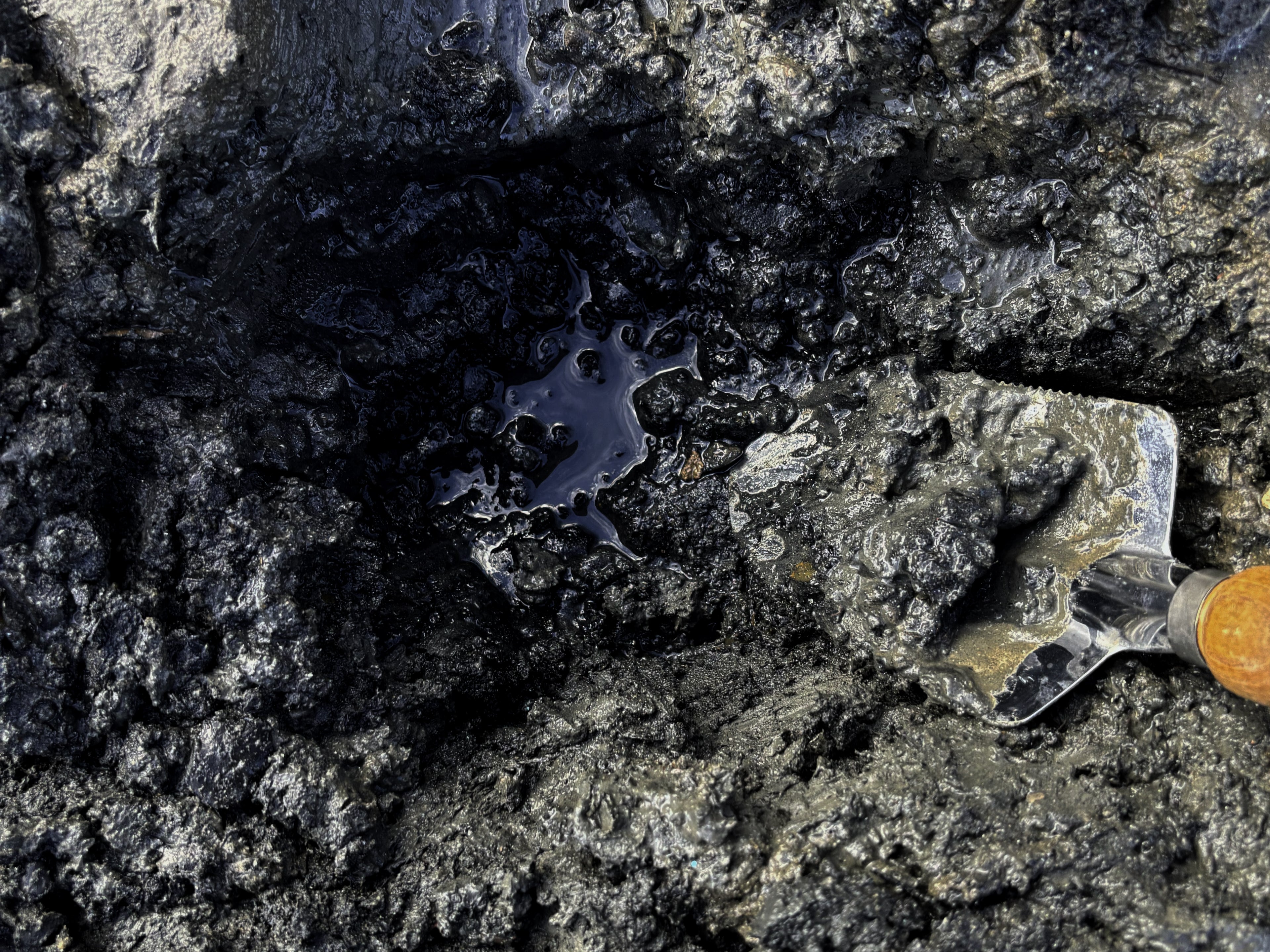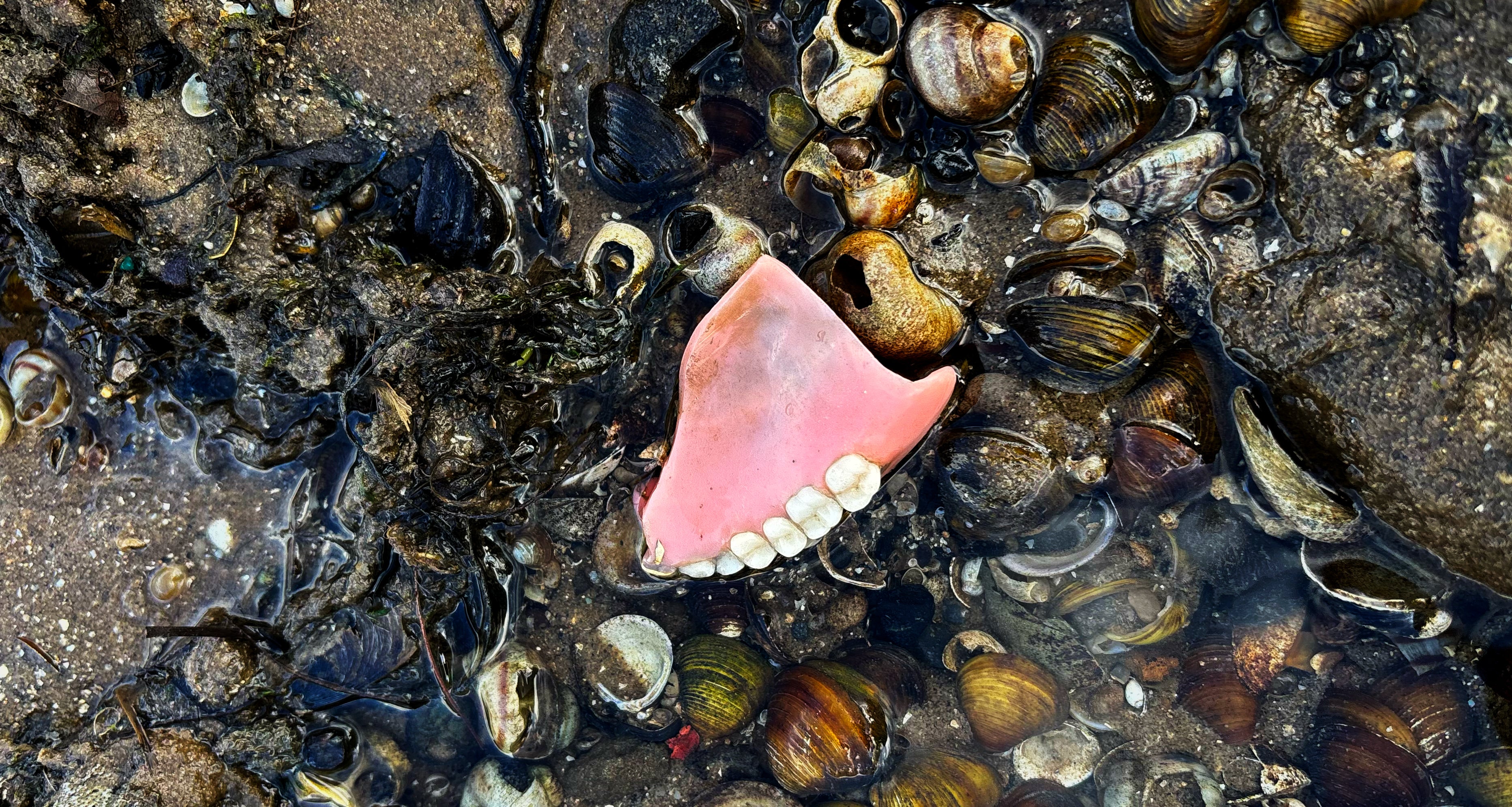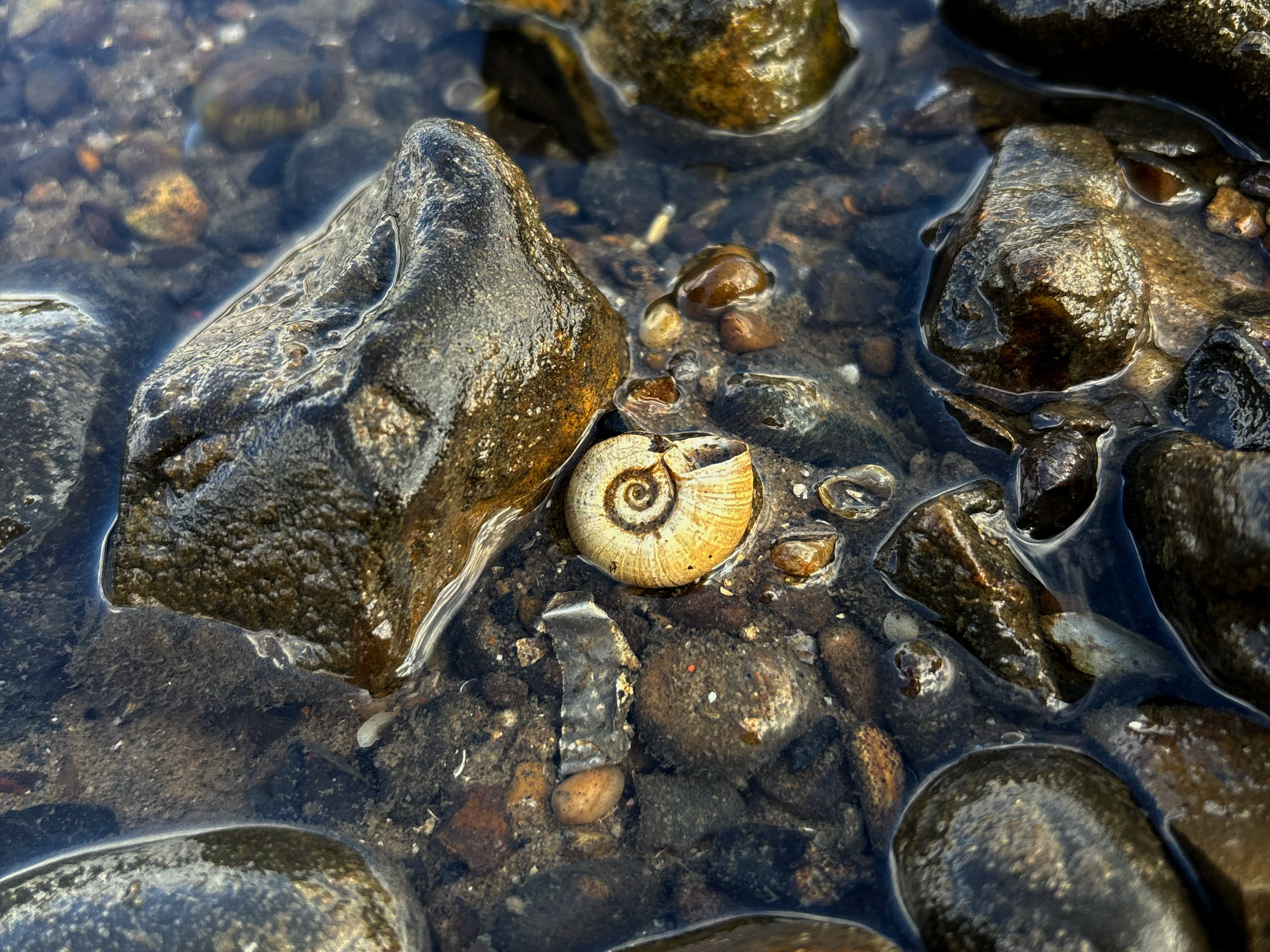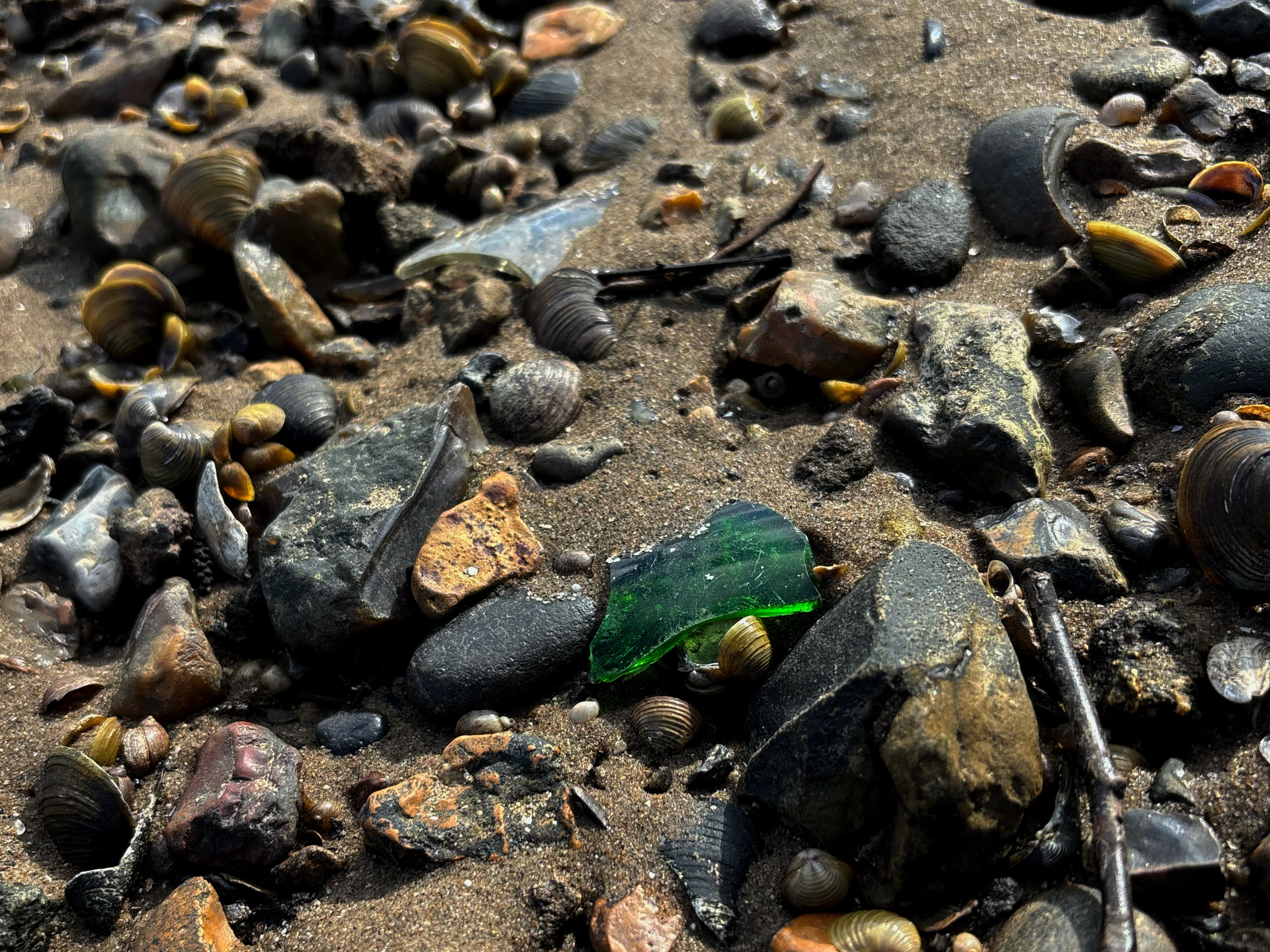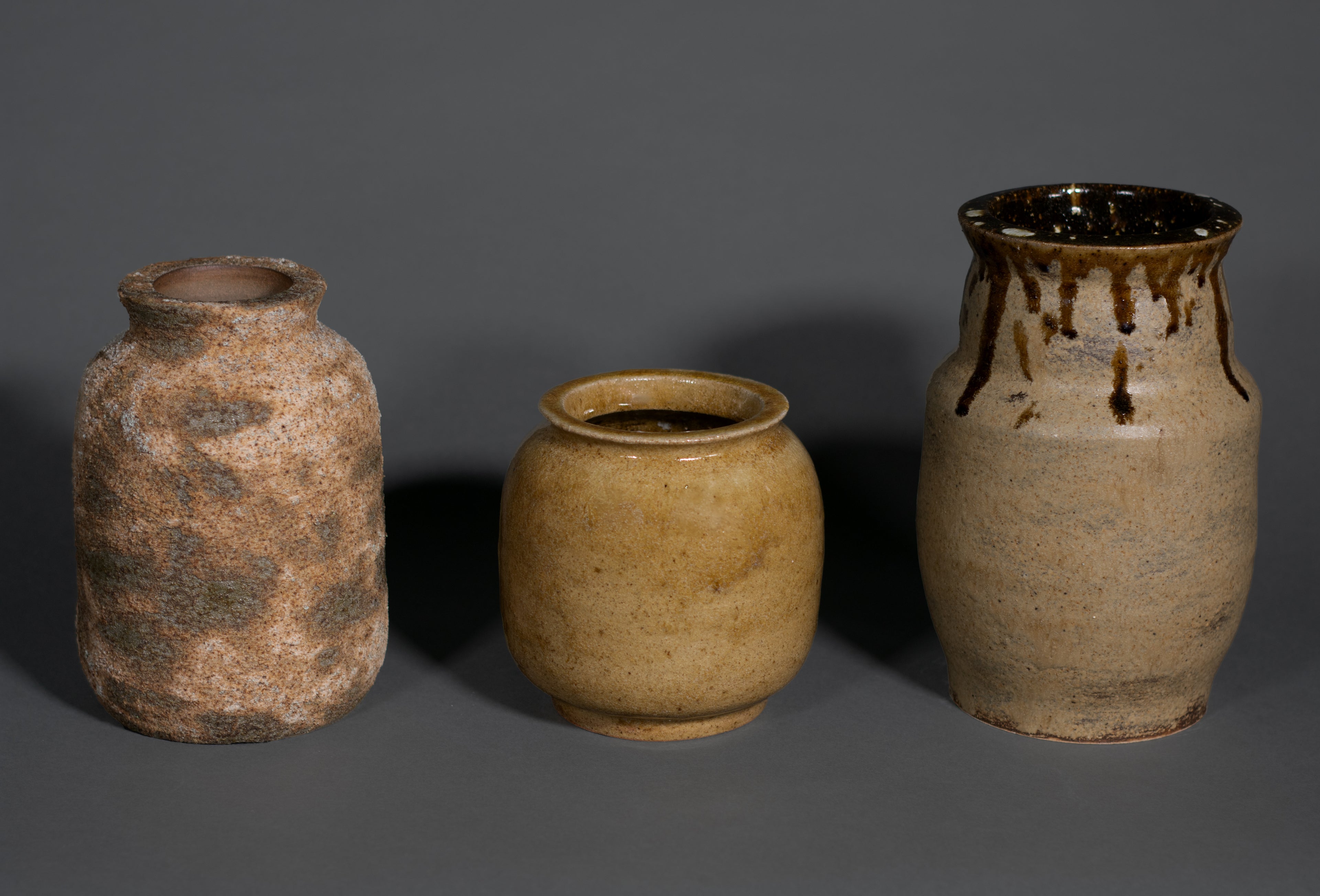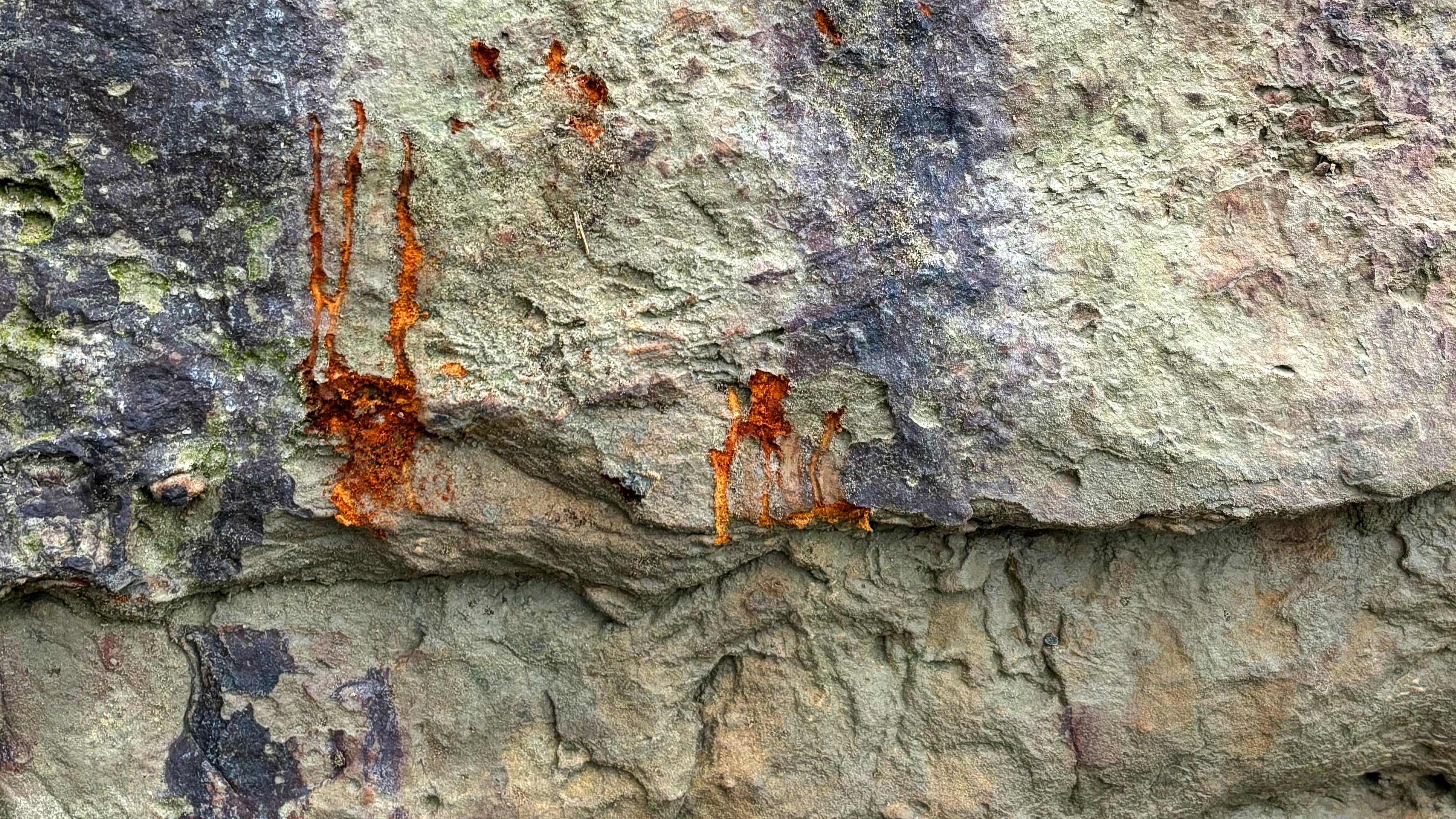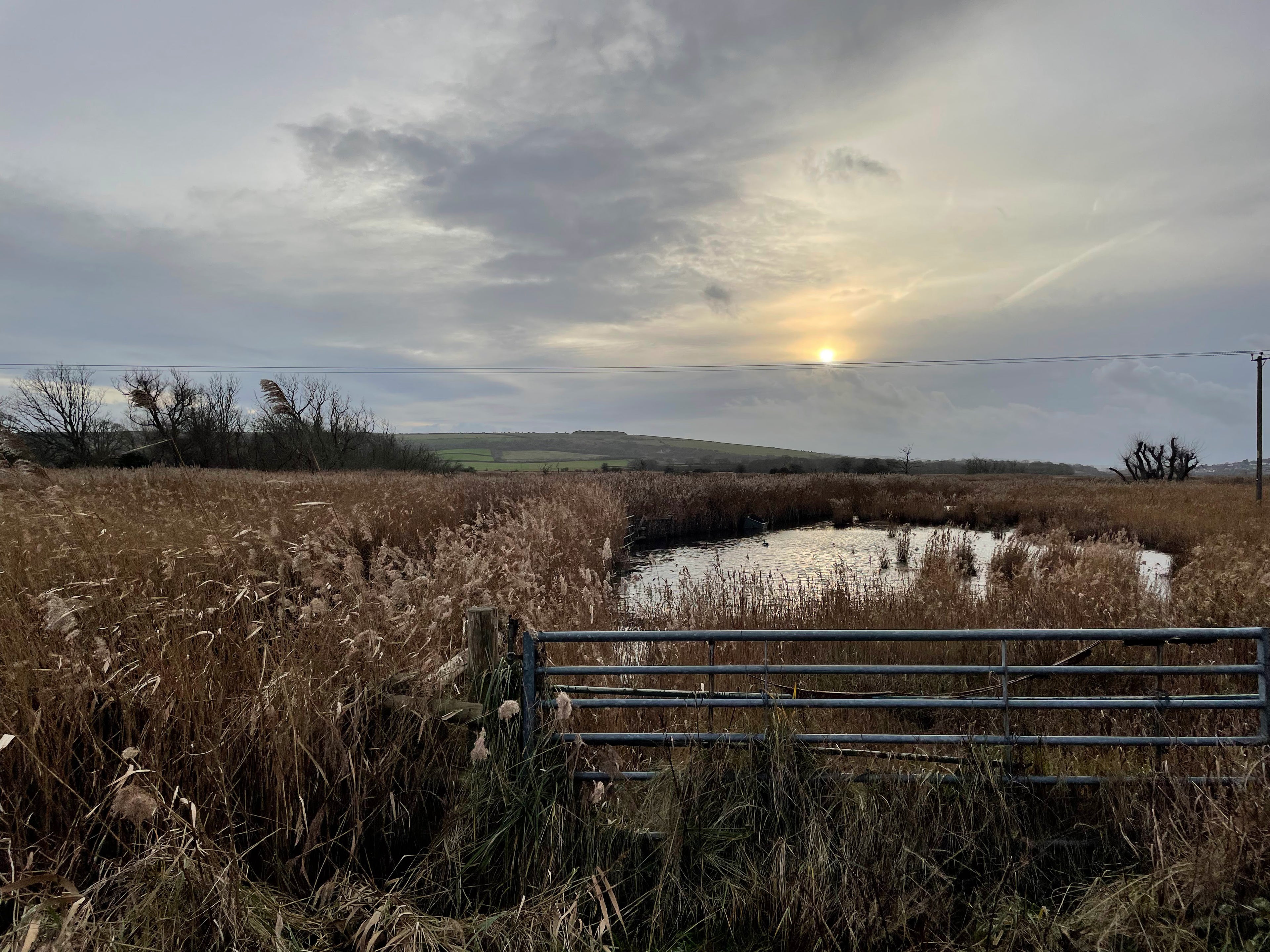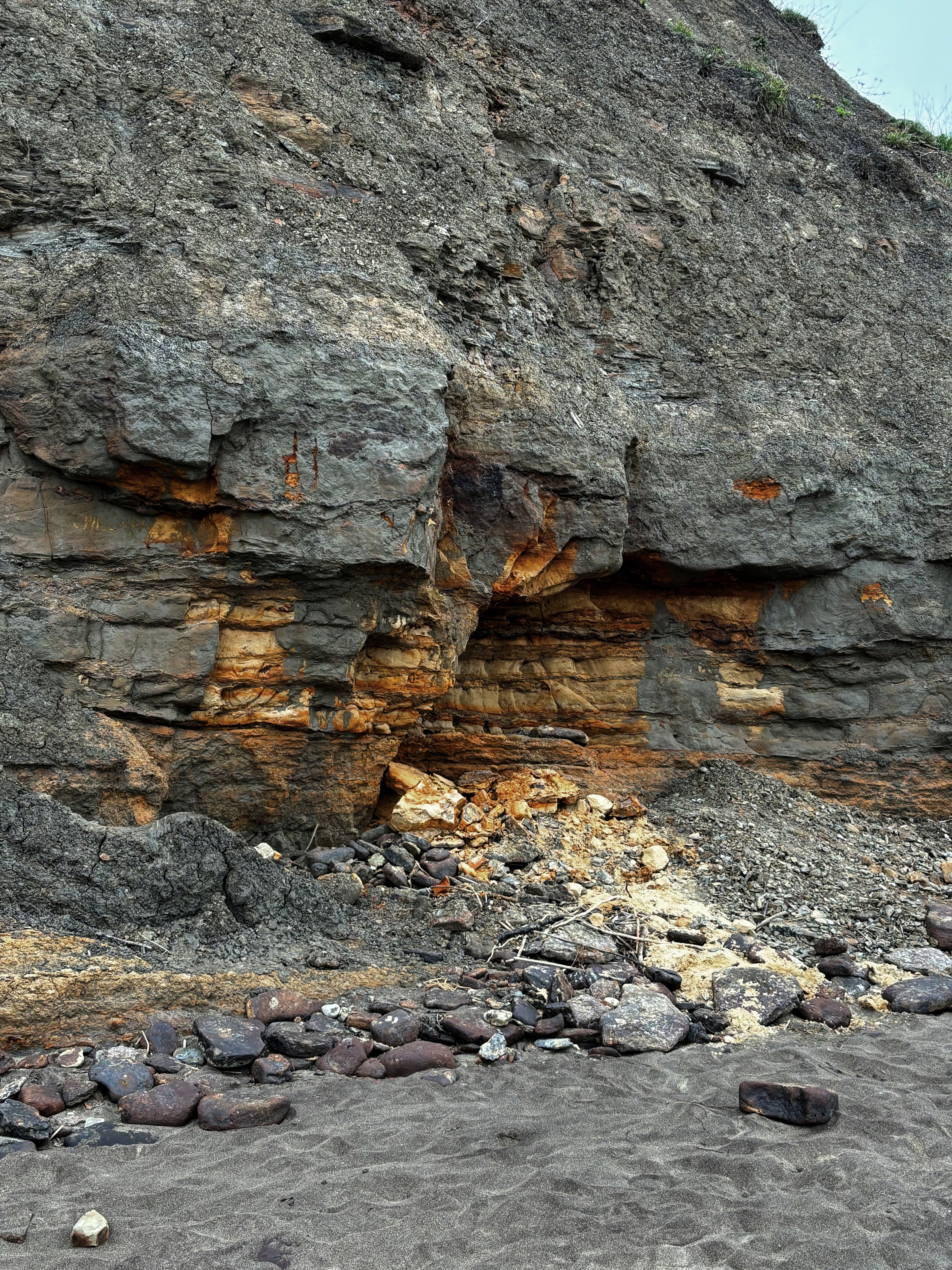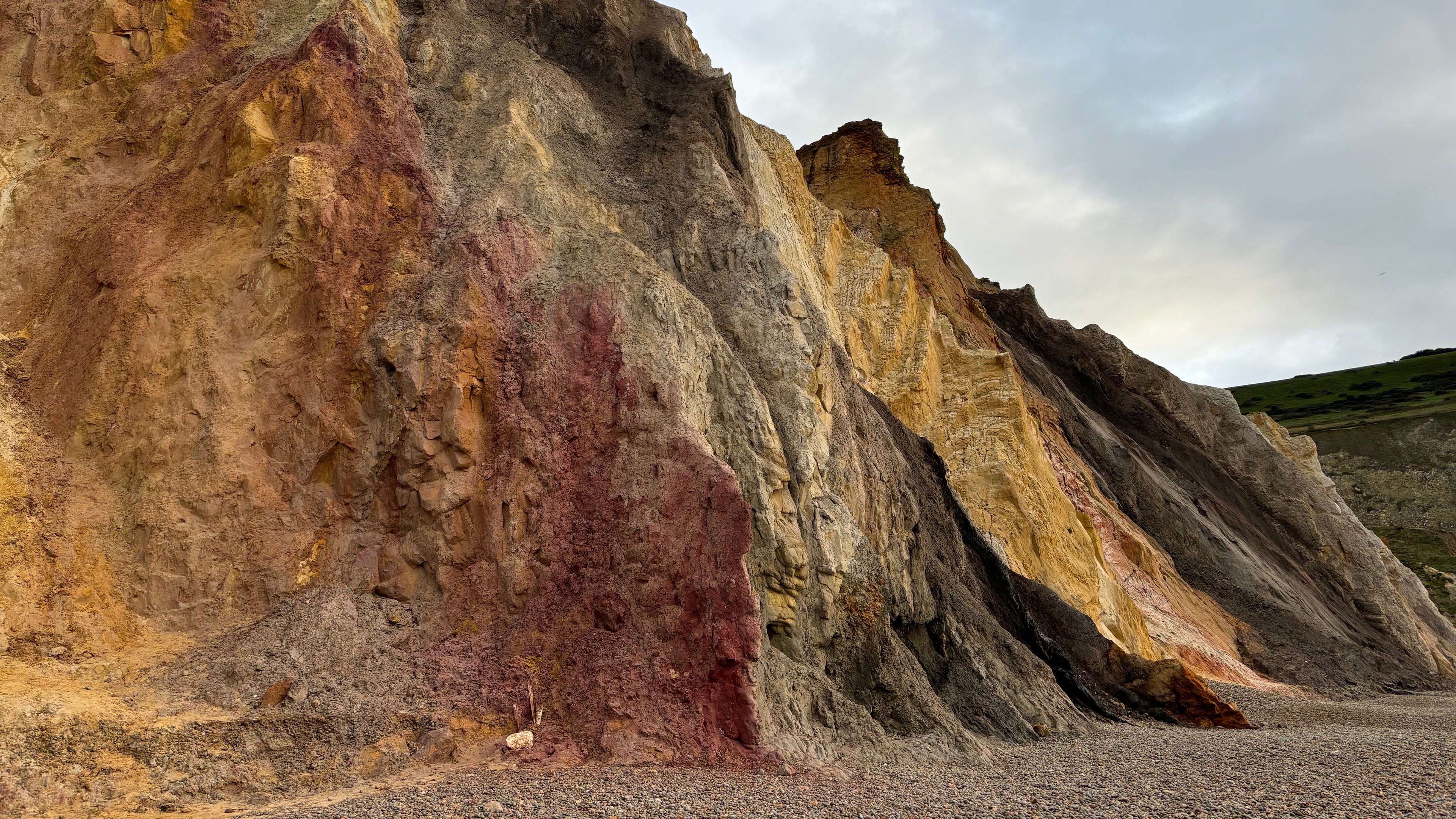Material Place
Project Overview
This project investigates a sense of place through materiality. Taking an exploratory approach, Neve Beill walked along areas of the River Thames and the coast of the Isle of Wight, collecting various wild clays and other natural materials to create two distinct collections of pots.
A key focus of this project is finding innovative ways to use found materials whilst reducing waste. Replacing conventional commercial materials, commonly used in the ceramics industry, with a wide variety of waste materials, such as clay from construction sites, broken pieces of glass, discarded bones and ash from various sources.
Honouring her own cultural identity, growing up between London and the Isle of Wight, she draws on the historical significance of ceramics in these areas. The primary forms are inspired by Roman vessels discovered in both locations, whilst the range of finishes reflect the differing tactile qualities of each location.
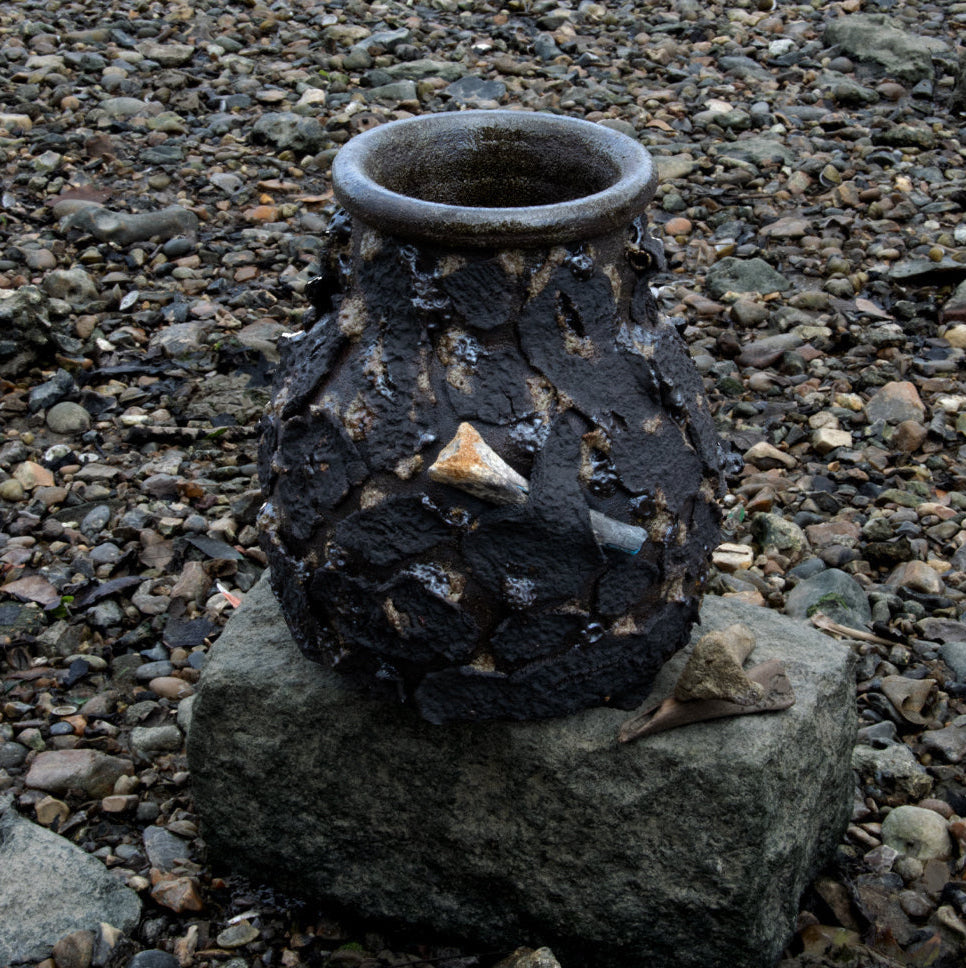
Bones
When mudlarking along the River's foreshore , I have consistently come across bones, presumably animal remains from the meat industry, discarded into the river over decades. I’ve been experimenting with various ways to repurpose this material.There’s something compelling about the mystery of found objects, and I wanted to capture that sense of the unknown in a pot that echoes the character of the Thames itself. The glaze on the inside of the pot, is a combination of wild clay from the River Banks, fireplace ash and crushed bones. The textural details is vitrified clay, sourced from various locations along the Thames. The final pot tells a story of what I observed, documented and learnt.
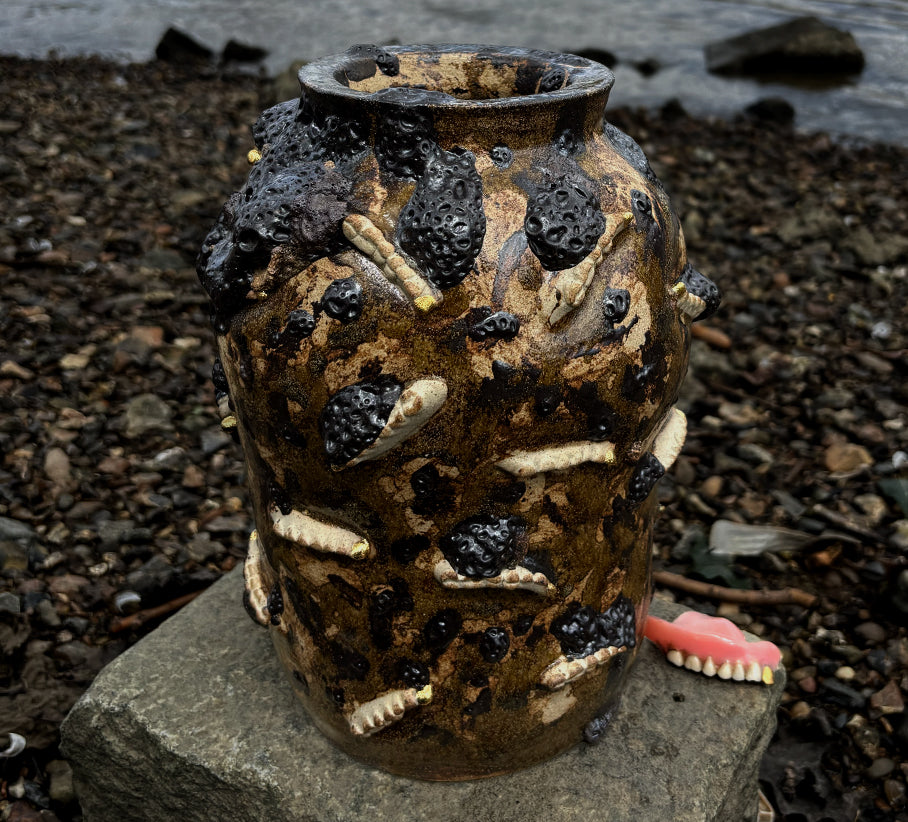
Teeth
One of the more unusual and unexpected discoveries I made while mudlarking was a set of dentures, featuring a single gold tooth at the front. The find intrigued me, adding a sense of mystery to the river that I hadn’t felt before. It raised a number of questions: Who did these teeth belong to? How did they end up in the river near Hammersmith Bridge?
They were clearly valuable to someone, the gold tooth is real, and the craftsmanship suggests the work of a skilled dentist. Were they part of a corpse’s remains? Or did they simply fall from someone's mouth as they leaned over the bridge? And how long had they been lying there, hidden in the mud?
I created a mould of the dentures and embedded them into the surface of one of my pots, fusing them with vitrified Thames clay in an attempt to reflect how I found them, gleaming in the thick, black mud. One of my main aims with this project was to incorporate found objects and evoke a strong sense of place. This particular piece captures both goals in a way that was entirely unexpected, yet deeply resonant.
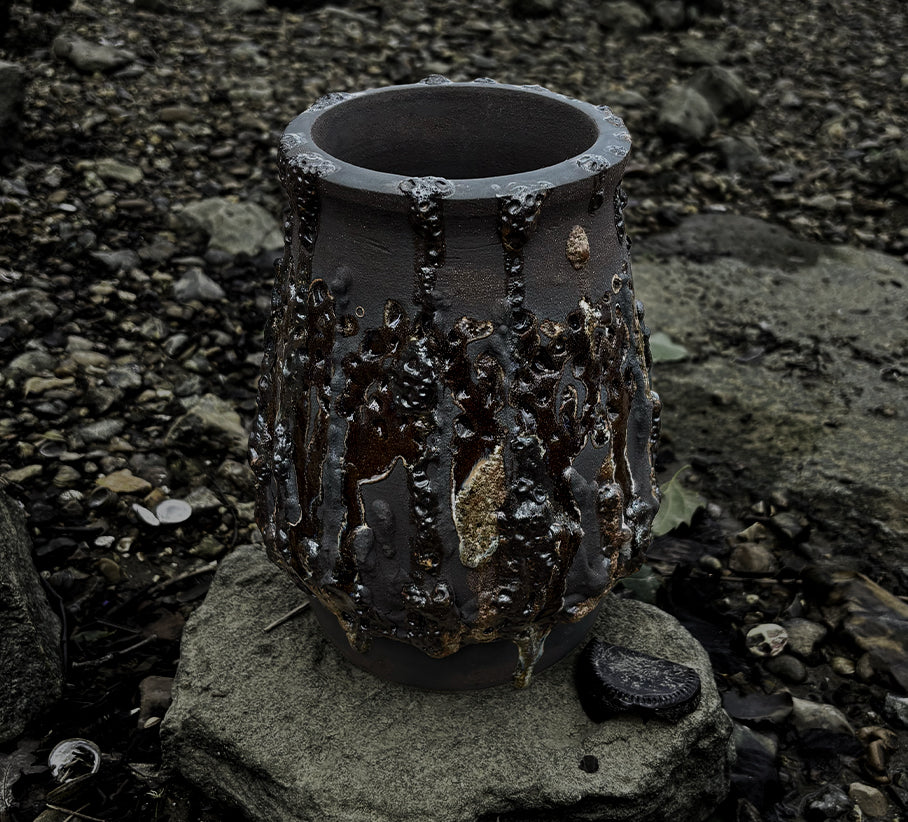
Glass
When walking along areas of the foreshore and collecting clay, it was vital to wear gloves, due to the River being heavily polluted with, glass, plastic and sewage. One thing that struck me was the amount of glass, even within the clay I dug up. As I reclaimed the clay, I was constantly picking out shards of glass. I wasn’t sure if these came from within the clay itself, or had been dug up nearer the surface, when I was digging down for the clay. Either way, it was slightly unsettling.
Once the clay was fully reclaimed and I began throwing it on the wheel, I soon noticed small cuts all over my hands, presumably caused by fragments of glass that had slipped through the cleaning process and been crushed during reclaiming.
Some of my early test pots revealed a shiny, iridescent quality, not from the clay itself, but from these tiny glass particles. That unexpected result inspired the final piece in this collection. I decided to deliberately reintroduce some of the glass shards I had originally removed, embedding them into the surface of the pot after it had been thrown. When fired in the kiln, the vitrified clay and melting glass fused together, creating an effect that speaks directly to the raw, polluted materiality of the Thames. Feedback from a mudlarker, revealed that the iridescent sheen of the melted glass echoed the visual qualities of the river’s surface, shimmering and reflective due to oil pollution.
This collection, made and inspired by the River Thames, differs greatly from the one developed using materials from the Isle of Wight, which draws its influence from the surrounding coastline.
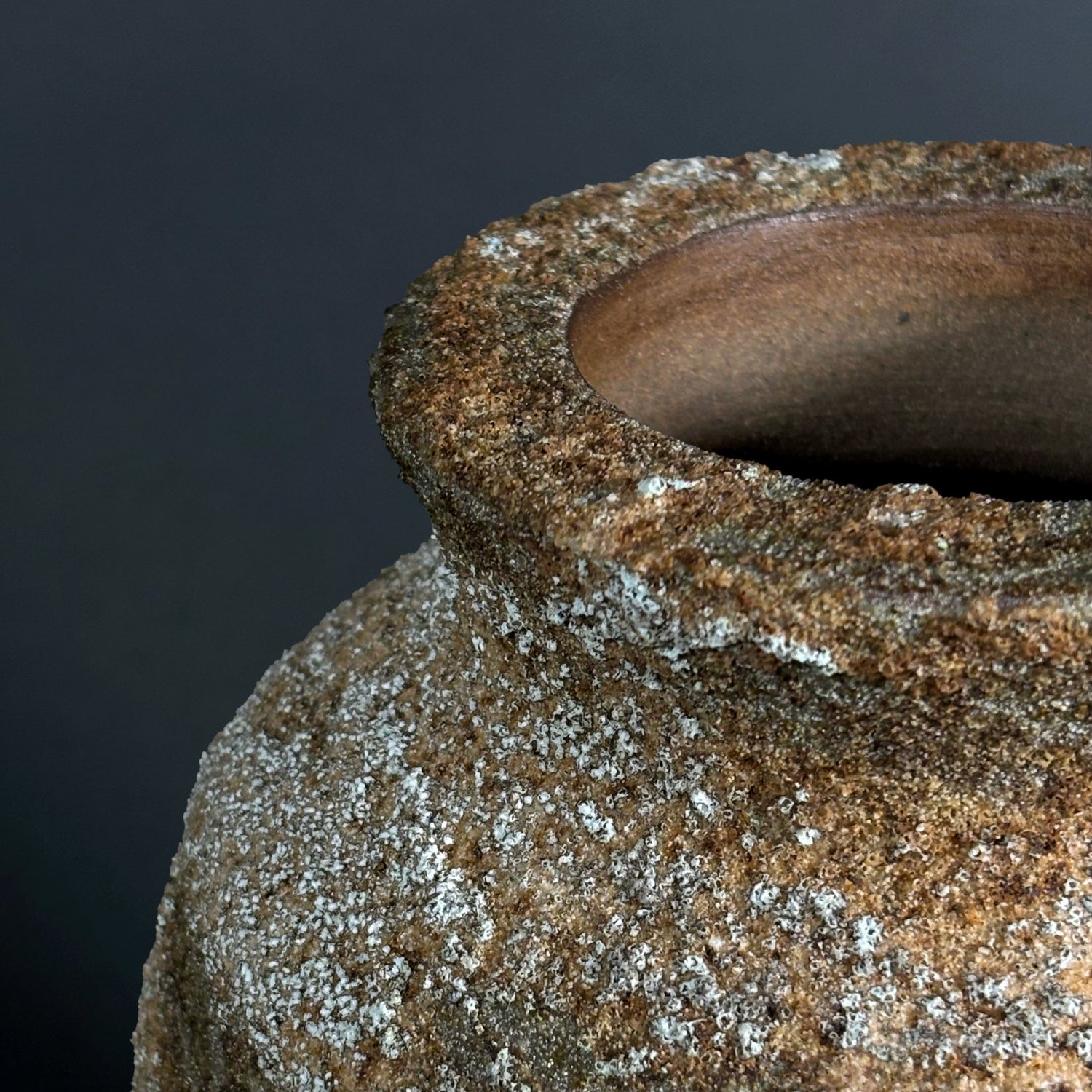
Chalk
This pot reflects the raw materials I gathered from Sandown Beach. The clay used to form it was collected during an initial visit, but on a later trip to gather more, I noticed Culver Cliff. A striking, sheer rock face with exposed chalk formations. Some of the chalk had crumbled due to erosion. I collected a small bag and began experimenting with it. By combining it with local clay and sand, I created a slip that, once fired, echoed the cliff’s rugged textures and natural tones.
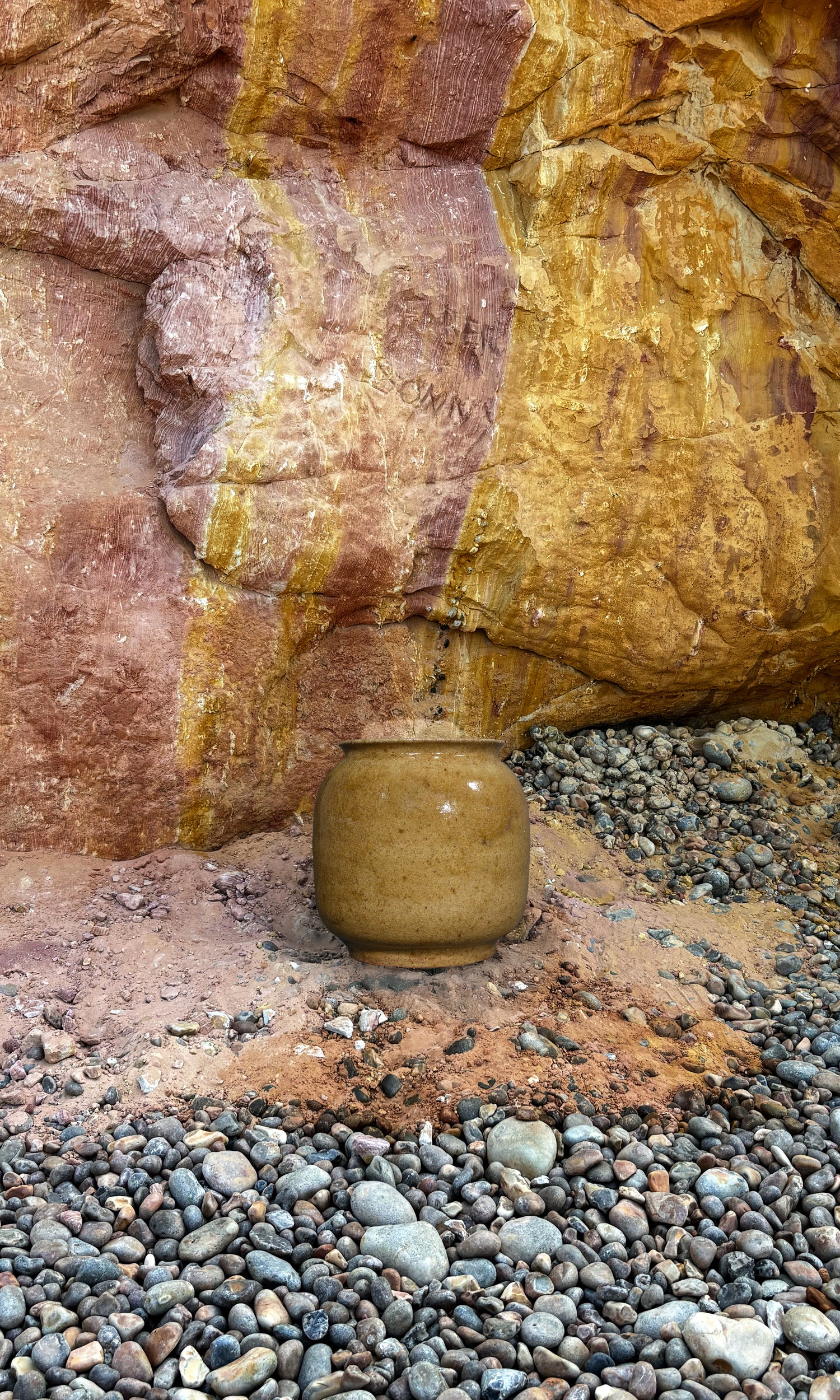
Cigarette ash
While using natural materials sourced directly from each location was essential to the project, finding innovative ways to incorporate overlooked or unconventional waste materials became just as important. During the testing stages, I developed several ash glazes, one of which stood out in particular. It was made from a combination of crushed wild clay from Alum Bay on the Isle of Wight and cigarette ash, resulting in a striking yellow glaze.
What fascinated me was how closely the glaze mirrored the vibrant tones of Alum Bay itself, a place known for its vivid, layered cliffs, especially the rich yellow hues of its rock formations. I knew immediately that this was the result I’d been searching for; it captured both the character of the clay and the essence of the landscape. To complete the process, I returned the final pot to Alum Bay, allowing me to see it in direct dialogue with its place of origin.

